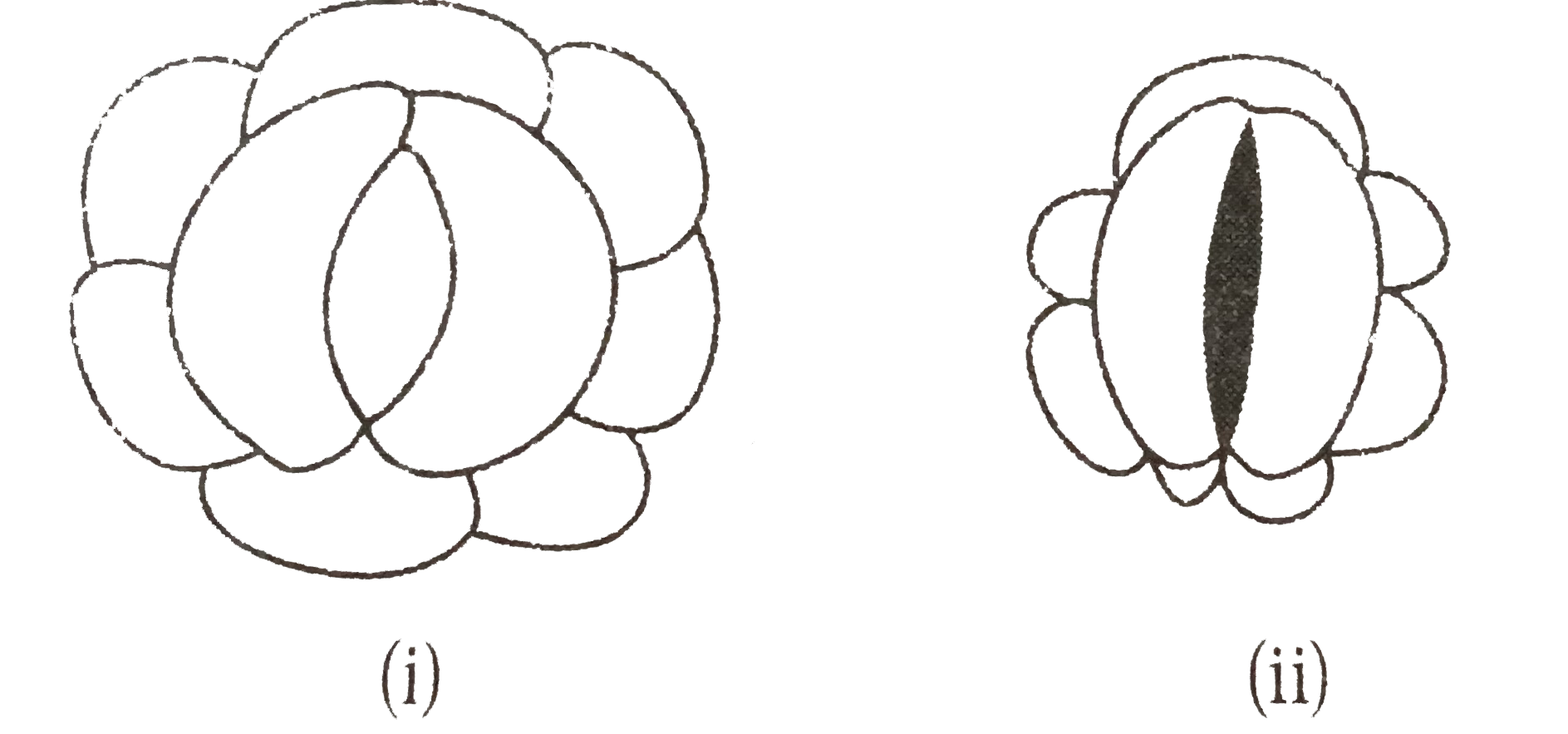The process involved in regulating the opening and closing of stomata
Simple diffusion
Osmosis
Plasmolysis
Imbibition
The correct Answer is:B
Step-by-Step Solution:
1. Understanding Stomata: Stomata are small openings on the surface of leaves that facilitate gas exchange. Their opening and closing are crucial for regulating water loss and gas exchange in plants.
2. Role of Guard Cells: The stomata are flanked by specialized cells known as guard cells. These cells control the size of the stomatal opening. When guard cells swell, they cause the stomata to open; when they become flaccid, the stomata close.
3. Water Movement: The primary process that regulates the opening and closing of stomata is the movement of water into and out of the guard cells. This movement is driven by osmosis.
4. Osmosis Explained: Osmosis is the process where water moves from an area of lower solute concentration to an area of higher solute concentration across a semi-permeable membrane. In the case of guard cells, when water enters the cells, they swell and become turgid, leading to the opening of the stomata.
5. Conditions for Opening and Closing:
- Opening of Stomata: When there is sufficient water available, it enters the guard cells, causing them to become turgid and resulting in the opening of the stomata. This allows for transpiration, which is the loss of water vapor from the plant.
- Closing of Stomata: Conversely, when water is scarce, the guard cells lose water and become flaccid. This leads to the closing of the stomata to prevent excessive water loss.
6. Conclusion: The process that regulates the opening and closing of stomata is primarily osmosis, which is the movement of water into and out of the guard cells.
- Opening of Stomata: When there is sufficient water available, it enters the guard cells, causing them to become turgid and resulting in the opening of the stomata. This allows for transpiration, which is the loss of water vapor from the plant.
- Closing of Stomata: Conversely, when water is scarce, the guard cells lose water and become flaccid. This leads to the closing of the stomata to prevent excessive water loss.
Topper's Solved these Questions
- TRANSPORT IN PLANTS BOOK - AAKASH SERIESCHAPTER - TRANSPORT IN PLANTS EXERCISE - EXERCISE II
52 Videos
- TRANSPORT IN PLANTS BOOK - AAKASH SERIESCHAPTER - TRANSPORT IN PLANTS EXERCISE - EXERCISE III
20 Videos
- RESPIRATION IN PLANTSBOOK - AAKASH SERIESCHAPTER - RESPIRATION IN PLANTSEXERCISE - Exercise - III
9 Videos
Similar Questions
Name the mineral element which is involved in the opening and closing of stomata and whose deficiency leads to yellow edges of leaves and their death
View SolutionIf Levitt's hypothesis is to be believed , then the opening and closing of stomata take place as a result of …...... in and out of guard cells .
View Solution
Knowledge Check
Assertion: Each stoma is composed of two bean shaped cells known as guard cells.
Reason: Guard cells regulate the opening and closing of stomata.AIf both assertion and reason are true and reason is the correct explanantion of assertionBif both assertion and reason are true but reason is not the correct explanation of assertion.Cif assertion is true but reason is false.Dif both assertion and reason are false.
Enzyme connected with opening and closing of stomata is
View SolutionEnzyme connected with opening and closing of stomata is
View SolutionOpening and closing of stomata is due to
View SolutionOpening and closing of stomata is due to
View SolutionWhat is the importance of potassium in the opening and closing of stomata?
View SolutionElement involed in stomatal regulation, its opening and closing is
View SolutionObserve the diagram and answer the following.

(a) Are these types of guard cells found in monocots or dicots ?
(b) Which of these shows a higher water content (i) or (ii) ?
(c) Which element plays an important role in the opening and closing of stomata ?
View Solution
